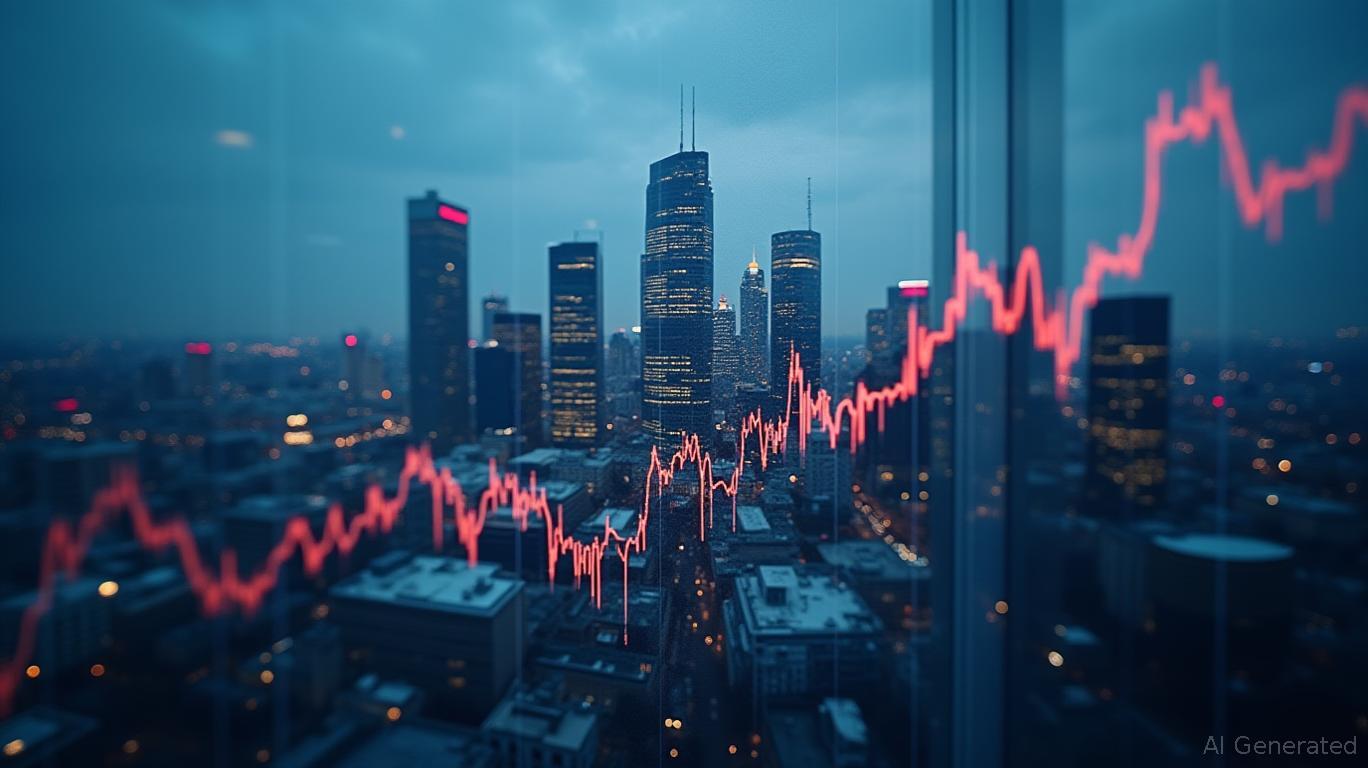DAX Index Under Pressure: Navigating Trade Tensions and Manufacturing Slump Amid ECB Rate Cuts
The German DAX Index (^GDAXI) has surged to record highs in 2025, defying a sluggish manufacturing sector and a contracting GDP. This divergence between equity market optimism and weakening economic fundamentals raises critical questions: How long can the DAX sustain its rally? What risks loom from trade disputes and structural challenges? And where should investors allocate capital in this environment?

The Divergence: Strength in Stocks vs. Struggles in Manufacturing
The DAX's year-to-date gain of 18.03% through mid-2025 reflects investor confidence in Germany's corporate sector, particularly in export-driven giants like Siemens Energy and Daimler Truck. However, the manufacturing sector—the backbone of Germany's economy—remains in contraction. The May Manufacturing PMI of 48.3 marked the 14th consecutive month below 50, signaling persistent weakness in factory output. This disconnect highlights a market prioritizing near-term earnings optimism over long-term structural risks.
Trade Tensions: The Near-Term Wildcard
While the finalized U.S.-U.K. trade agreement boosted investor sentiment in late May, broader trade risks remain unresolved. Ongoing U.S.-China tensions and lingering disputes over automotive tariffs threaten Germany's export-reliant economy. A 20% drop in machinery exports to Asia in Q1 2025 underscores the vulnerability. Analysts warn that further escalation could reverse the DAX's gains, particularly for sectors like automotive and industrial goods.
Investors should monitor trade negotiations closely. A deterioration in U.S.-China relations could pressure stocks like Continental AG (CONG.DE) and Bosch, which rely heavily on Asian markets.
ECB Rate Cuts: A Mixed Blessing
The ECB's aggressive rate-cutting cycle—reducing the deposit rate to 2% by mid-2025—has fueled speculation that accommodative monetary policy will offset economic headwinds. While this has supported sectors like pharmaceuticals and utilities, it has done little to revive manufacturing. Construction PMI, for instance, fell to 44.4 in May, reflecting stagnation in infrastructure projects.
The ECB's strategy hinges on falling energy prices and a strong euro curbing inflation. However, low borrowing costs may also mask underlying corporate stress. Investors should favor companies with pricing power or domestic demand resilience, such as Bayer (BAYN.DE) or Merck KGaA (MRK.GR), which reported robust earnings from drug trials and lab equipment sales.
Opportunities in Resilient Sectors
The current environment favors sectors insulated from trade and manufacturing headwinds:
- Pharmaceuticals:
- Bayer surged 4.38% in late May on positive drug trial news, illustrating the sector's ability to deliver stable growth.
Merck KGaA benefits from rising demand for lab supplies in biotech and healthcare.
Infrastructure Plays:
HOCHTIEF (HOT.DE) and Strabag (STRAT.VI) could gain traction as governments prioritize public projects to combat unemployment. The German government's €50 billion infrastructure plan targets renewable energy and transportation upgrades.
Utilities:
- EON (EOAN.DE) and RWE (RWEG.DE) are beneficiaries of lower rates and the energy transition. Their stable cash flows appeal to risk-averse investors.
Risks to Monitor
- Earnings Downgrades: If corporate profits fall short of expectations due to trade or cost pressures, the DAX could correct sharply.
- ECB Policy Limits: Rate cuts may lose efficacy if inflation rebounds or the euro weakens.
- Political Uncertainty: Coalition negotiations in Germany could delay fiscal stimulus, prolonging the GDP slump.
Investment Strategy
Underweight: Manufacturing and automotive stocks (e.g., Volkswagen (VOW3.DE), Robert Bosch) due to trade risks and weak demand.
Overweight: Pharmaceuticals, utilities, and infrastructure firms with domestic or global demand drivers. Consider a barrier strategy using options to protect gains in the DAX while hedging against volatility.
The DAX's resilience masks deeper economic fragility. Investors must balance short-term optimism with long-term risks. Focus on sectors that thrive in uncertainty—and stay vigilant on trade headlines.
This article was written on June 6, 2025.

Comments
No comments yet